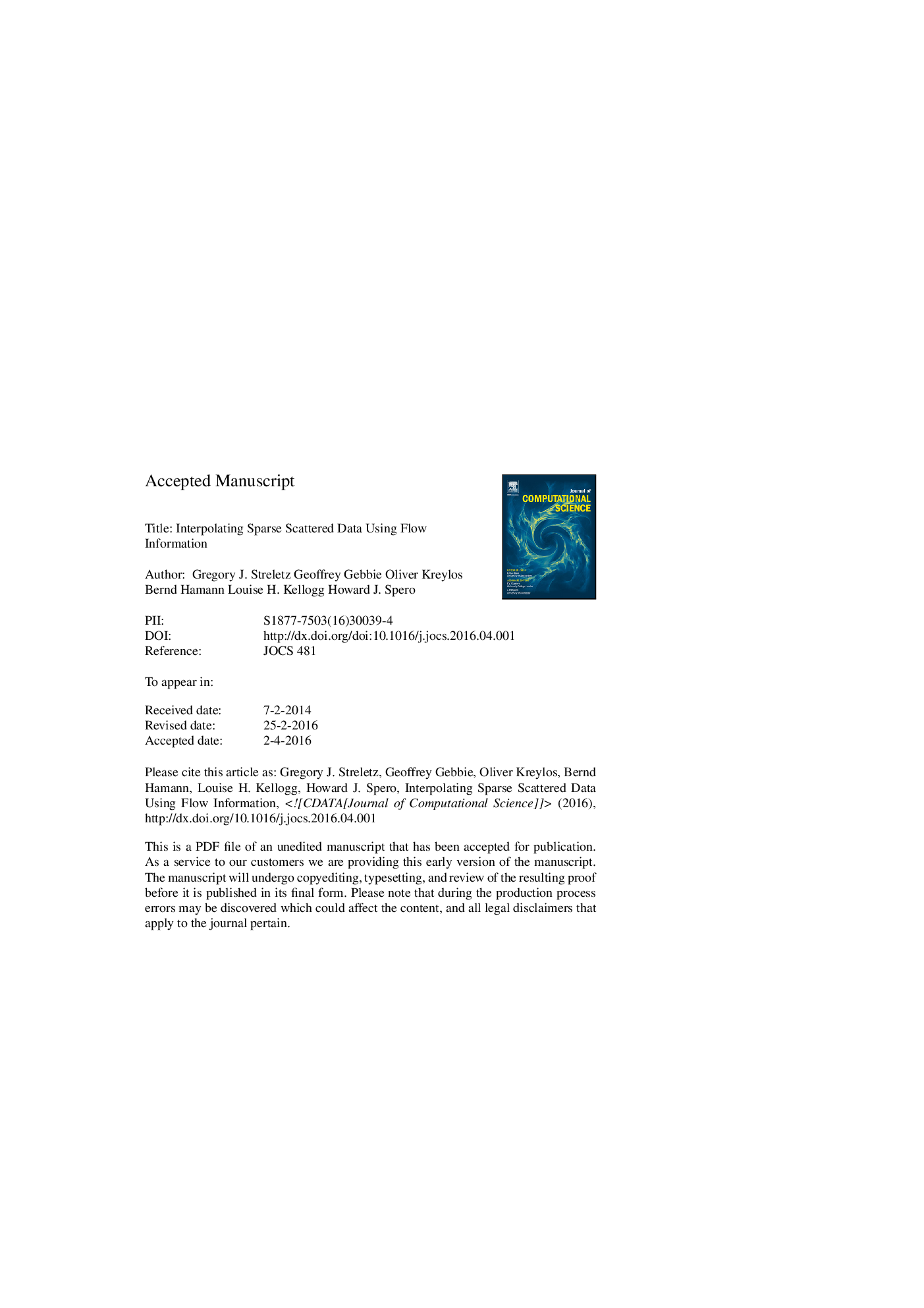| Article ID | Journal | Published Year | Pages | File Type |
|---|---|---|---|---|
| 6874532 | Journal of Computational Science | 2016 | 38 Pages |
Abstract
Scattered data interpolation and approximation techniques allow for the reconstruction of a scalar field based upon a finite number of scattered samples of the field. In general, the fidelity of the reconstruction with respect to the original scalar field tends to deteriorate as the number of samples decreases. For the situation of very sparse sampling, the results may not be acceptable at all. However, if it is known that the scalar field of interest is correlated with a known flow field - as is the case when the scalar field represents the value of an oceanographic tracer that propagates under the influence of the ocean's flow - then this knowledge can be exploited to enhance the scattered data reconstruction method. One way to exploit flow field information is to use it to construct a modified notion of distance between points. Replacing the standard Euclidean distance metric with a flow-field-aware notion of distance provides a method for extending standard scattered data interpolation methods into flow-based methods that produce superior results for very sparse data. The resulting reconstructions typically have lower root-mean-square errors than reconstructions that do not use the flow information, and qualitatively they often appear physically more realistic.
Keywords
Related Topics
Physical Sciences and Engineering
Computer Science
Computational Theory and Mathematics
Authors
Gregory J. Streletz, Geoffrey Gebbie, Oliver Kreylos, Bernd Hamann, Louise H. Kellogg, Howard J. Spero,
